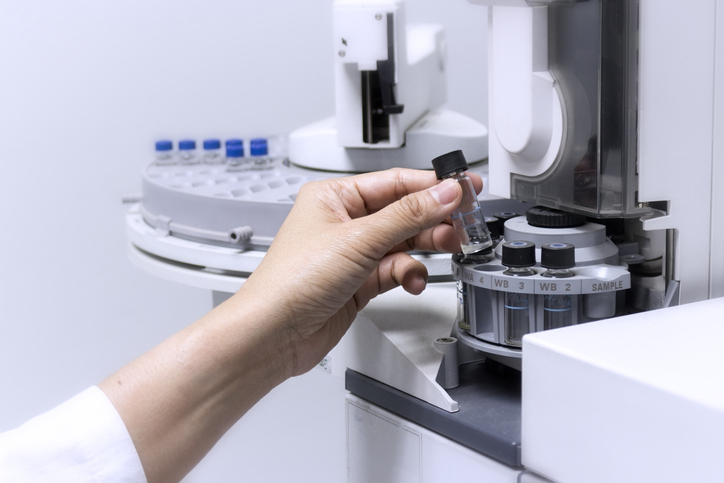Two very different aspects of Environmental Monitoring
28 Mar 2022

Chromium (Cr) (VI) is a well-known toxic, mutagenic, and carcinogenic water pollutant (1). The World Health Organization (WHO) set a maximum allowable limit of 50 µg/L for Cr (VI) in groundwater and drinking water (2).
The standard ion chromatography (IC) method for quantification of chromate ion (CrO42-), the most common Cr (VI) anion, in water samples is EPA Method 218.7 (3) which involves the separation of CrO4 2- using a high-capacity anion exchange separator column, a post-column derivatization with Cr (VI)-specific reagent 1,5-diphenylcarbazide, and UV-Vis detection of the coloured complex at 530 nm (3). The Cr (VI)-specific reagent diphenylcarbazide and UV-Vis detection allow sensitive quantification of Cr (VI) at low µg/L concentrations. However, method 218.7 is Cr (VI) specific and does not quantify other regulated analytes present in a sample, such as arsenate As(V), selenate Se(VI) or perchlorate ClO4- , nor common anions such as chloride, nitrate and sulphate.
Thus, the IC analysis of environmental aqueous samples containing Cr (VI) and co-occurring anions requires multiple analytical methods with different columns and eluent compositions. In this work, Rangan et al. (4) developed an isocratic IC analytical method with suppressed conductivity detection for simultaneous quantification of Cr (VI) and eight other environmentally relevant anions: fluoride, chloride , nitrite, nitrate, sulphate, Se (VI), As (V), and perchlorate. They used a Metrosep A Supp 7 analytical column (250 · 4 mm) and the eluent contained 10.8 mM Na2CO3and 35% (v/v) gradient grade acetonitrile in deionized water (ELGA PureLab). The pH of the eluent as prepared was 11.9 +/– 0.02. The MSM suppressor solution contained 500 mM H2SO4 in deionized water. The method was validated and used to evaluate recovery of Cr (VI) and the other analytes in tap water, surface water, groundwater, and industrial wastewater samples.
The determination coefficient for every analyte was >0.99. Cr (VI), As (V), Se (VI), and ClO4-limits of detection and limits of quantification were 0.1–0.6 µg/L and 0.5–2.1 µlg/L, respectively. Recovery of Cr (VI) in various aqueous samples (tap water, surface water, groundwater, and wastewater) was between 97.2% and 102.8%. A typical chromatogram of the analytes (50 µg/L each in purified water) is shown in Fig. 1. All analytes were eluted within 20 min of sample injection. For Cr (VI), the LOD and LOQ were 0.2 and 0.6 µg/L, respectively. They were able to achieve this low LOD for Cr (VI) by using a 1000 µL injection loop, as used in the EPA Method for trace analysis of ClO4- in drinking water. Sulphate is a common constituent of environmental samples. Due to their peaks just after sulphate, Se (VI) and As (V) cannot be quantified with accuracy in samples containing sulphate at concentrations >10 mg/L. However, Cr (VI) and ClO4 - recovery was >85% in the presence of up to 500 mg/L sulphate, demonstrating that the method can be used to directly quantify low concentrations of Cr (VI) and ClO4- in matrices with a high concentration of sulphate.
FIG. 1. IC chromatogram of a mixture of 50 μg/L each of 9 anions
Why choose ELGA LabWater?
In trace analysis, especially if it is to meet regulatory requirements, it is essential to have confidence in the reagents used. The water is of particular importance as it is used in multiple aspects of the sample preparation and analysis. Rangan et al. relied on an ELGA PureLab system to give them the needed confidence in their results.
References
- Cohen, M.D., Kargacin, B., Klein, C.B., and Costa, M. (1993). Mechanisms of chromium carcinogenicity and toxicity. Crit. Rev. Toxicol. 23, 255.
- WHO. (2003). Guidelines for Drinking-Water Quality j Chromium. Geneva: World Health Organization. Available at: https://www.who.int/publications/i/item/9789241549950
- Zaffiro, A., Zimmerman, M., Wendelken, S., Smith, G., and Munch, D. (2011). METHOD 218.7: Determination of Hexavalent Chromium in Drinking Water by Ion Chromatography with Post-Column Derivatization and UV-Visible Spectroscopic Detection. Cincinnati, OH: United States Environmental Protection Agency.
- Srivatsan Mohana Rangan, Rosa Krajmalnik-Brown, and Anca G. Delgado An Ion Chromatography Method for Simultaneous Quantification of Chromate, Arsenate, Selenate, Perchlorate, and Other Inorganic Anions in Environmental Media ENVIRONMENTAL ENGINEERING SCIENCE Volume 38, Number 7, 2021. DOI: 10.1089/ees.2020.0347
